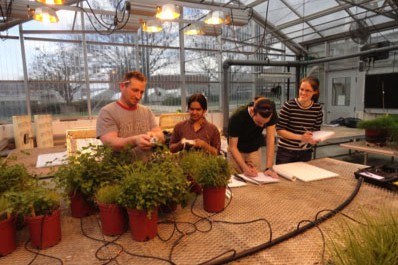This course trains the students in the analysis of the interaction of living organisms and their microenvironment by applying biophysical principles and engineering methods.

Environmental Biophysics course
The structures and physiological processes allowing plants and animals to survive, compete, and reproduce in natural environments are in many cases adaptations to capture resources and to cope with environmental stresses.
We explore the links between the environment and features of living organisms such as the architecture and color of canopies, root distribution, or the thickness of an animal fur. The goal of the course is that the students acquire a deeper understanding of the microenvironment in which living organisms reside and the ability to measure or calculate the mass and energy exchange between organisms and their surroundings. A laboratory section introduces the students to basic techniques and specialized equipment used in this discipline.
The course material and lab section are hands on and entertaining. Students enjoy developing new skills, getting familiar with equipment, and learning practical applications that are useful in many disciplines or for their professional life.

This course can be helpful for plant and animal sciences students, entomologists, and students in the areas of environmental sciences or agricultural and environmental engineering. Feel free to contact me if you are interested in taking this course.

